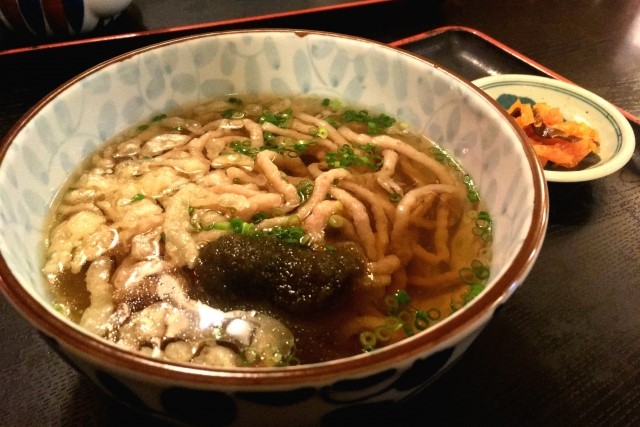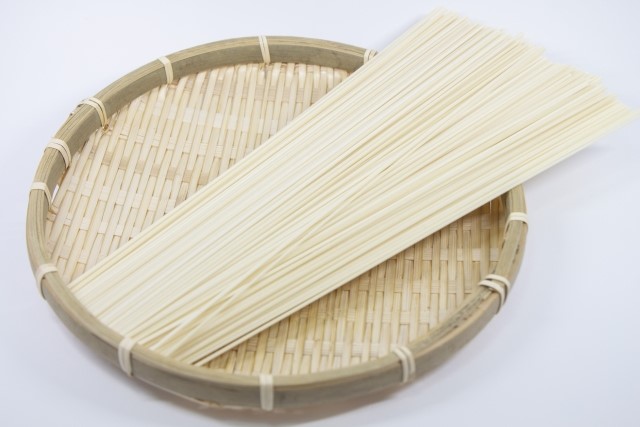Contents
Basic Information
Originating from Kagawa Prefecture in Shikoku, Sanuki udon is one of Japan’s representative udon noodles. Once limited to Western Japan, it is now popular nationwide, with numerous national Sanuki udon chains. Additionally, in Kyushu, you can enjoy various regional udon noodles, such as Nagasaki Sara udon and Fish udon, each with their unique characteristics.
Sanuki Udon
Sanuki Udon, one of the three major types of udon in Japan, originates from Kagawa Prefecture in the Shikoku region. The other two are Inaniwa Udon from Akita Prefecture and Mizusawa Udon from Gunma Prefecture. Among them, Sanuki Udon is the most widely known across Japan and can be considered a representative of Japanese udon. The texture of Sanuki Udon noodles, made through a unique process involving kneading the dough with feet, is highly praised.
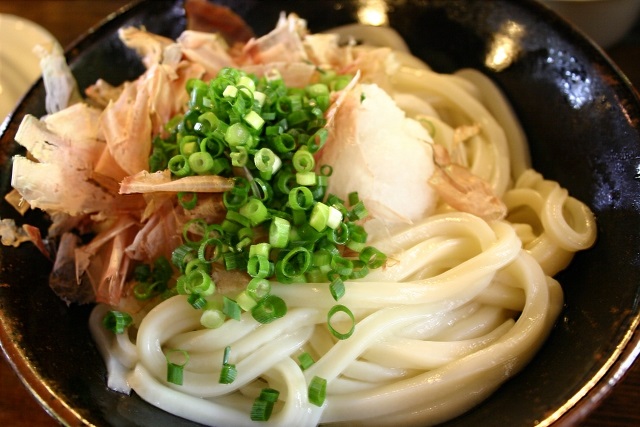
Dokidoki Udon
Dokidoki Udon is a type of udon eaten in Kitakyushu City, Fukuoka Prefecture, in the Kyushu region. Uniquely for Western Japanese udon, its broth prominently features the dark color of Eastern Japanese soy sauce. The toppings include generous amounts of diced beef simmered in soy sauce and ginger. The beef used is mainly cheek meat.
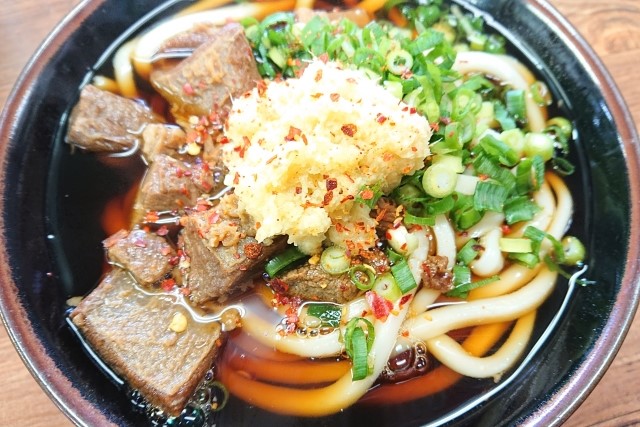
Maruten Udon
Maruten Udon is primarily consumed in Fukuoka Prefecture in the Kyushu region. ‘Maruten’ is a unique ingredient from the northern part of Kyushu, which is a type of surimi (ground fish paste) shaped into a circle and fried. It is characterized by its tender texture and thin noodles. The broth for the udon uses dried sardines, known as ‘iriko’.
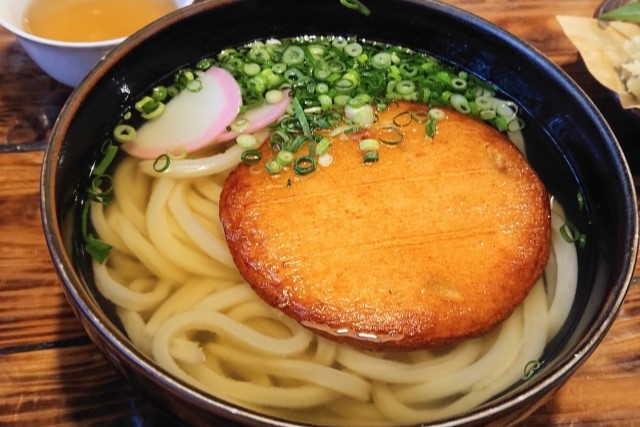
Sara Udon
Sara Udon is a unique type of udon eaten in Nagasaki Prefecture in the Kyushu region. It originated in 1899 when the owner of a Chinese restaurant who invented Nagasaki Champon created it as a soup-less Champon. Originally, Sara Udon used thick noodles, but recently some versions use thin, dried noodles. Regardless of the noodle thickness, the toppings remain the same, and the dish is referred to as either thick-noodle Sara Udon or thin-noodle Sara Udon.
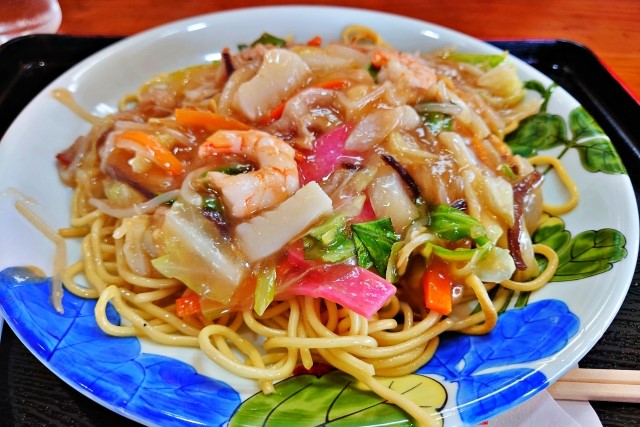
Gotou Udon
Gotou Udon is produced on the Gotou Islands in Nagasaki Prefecture in the Kyushu region. It is as famous as the three major udons of Japan – Inaniwa Udon from Akita Prefecture, Mizusawa Udon from Gunma Prefecture, and Sanuki Udon from Kagawa Prefecture. There is a theory that the Gotou Islands were the first place in Japan where the method of making udon was introduced from China. Despite the noodles being thin with a diameter of 2mm, they have a satisfying texture. The noodles are coated with camellia oil and matured, which is a unique feature. The broth for the udon uses dried flying fish.
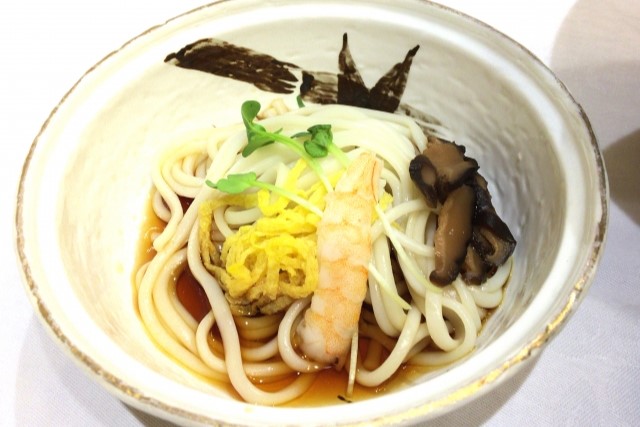
Kamaage Udon
Kamaage Udon is a type of udon eaten in Miyazaki Prefecture in the Kyushu region. There are more than 100 Kamaage Udon restaurants in Miyazaki City. Although Sanuki Udon from the Shikoku region is famous for Kamaage Udon, the culture of eating Kamaage Udon has taken root in Miyazaki Prefecture due to the history of people from Shikoku, located across the sea, settling there.
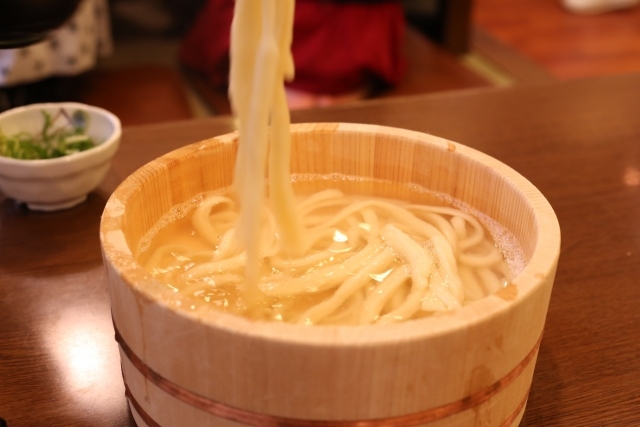
Gyo Udon
Gyo Udon is a local dish eaten in Miyazaki Prefecture in the Kyushu region. Its origin can be traced back to the 1940s during wartime when food was scarce. In order to cope with the shortage, noodles were made by adding wheat flour, potato starch, eggs, and salt to ground flying fish and other types of fish. At the time, while fish was available, rice and wheat flour were hard to come by, so this fish-based udon was created as a substitute food.
